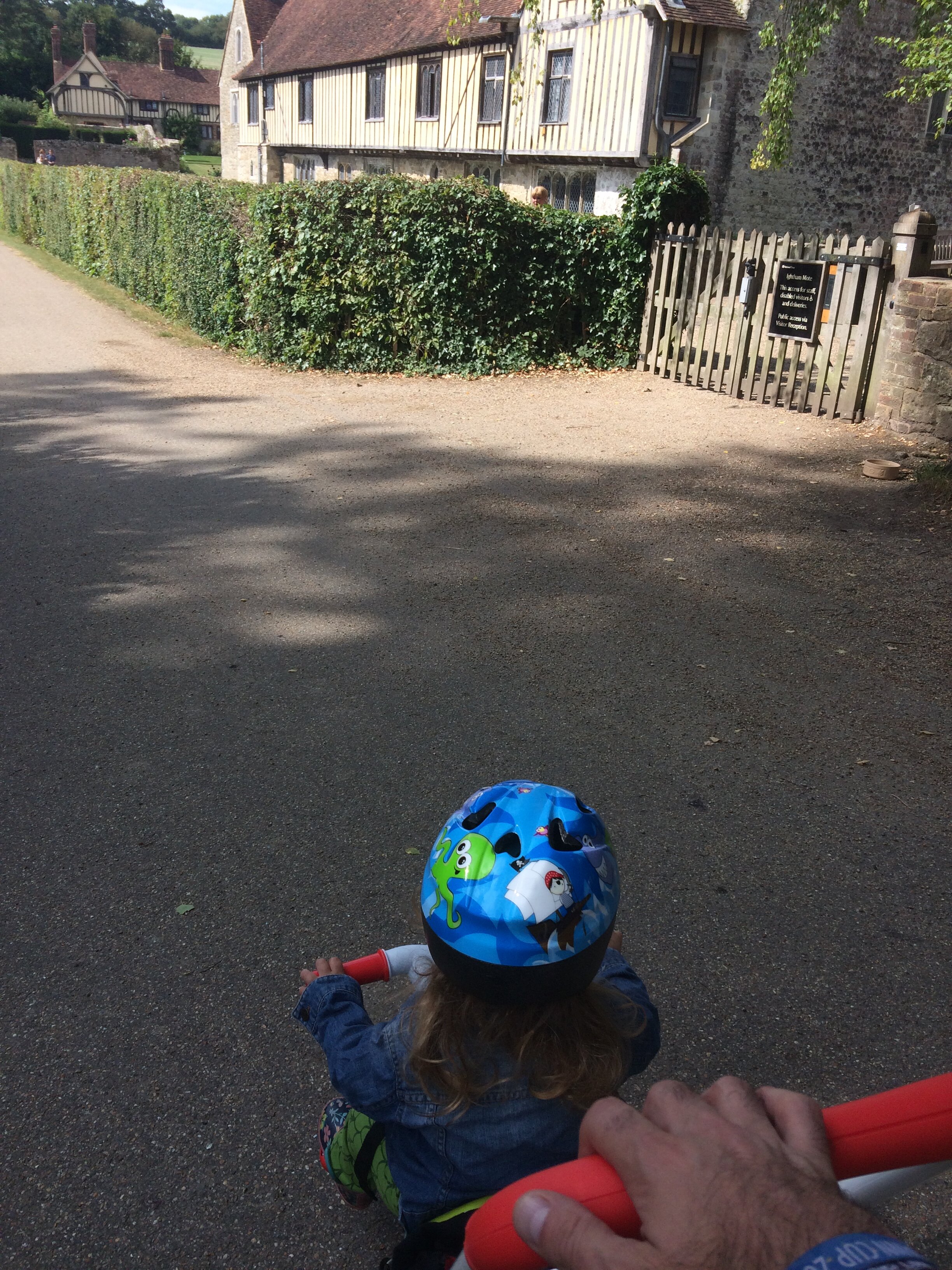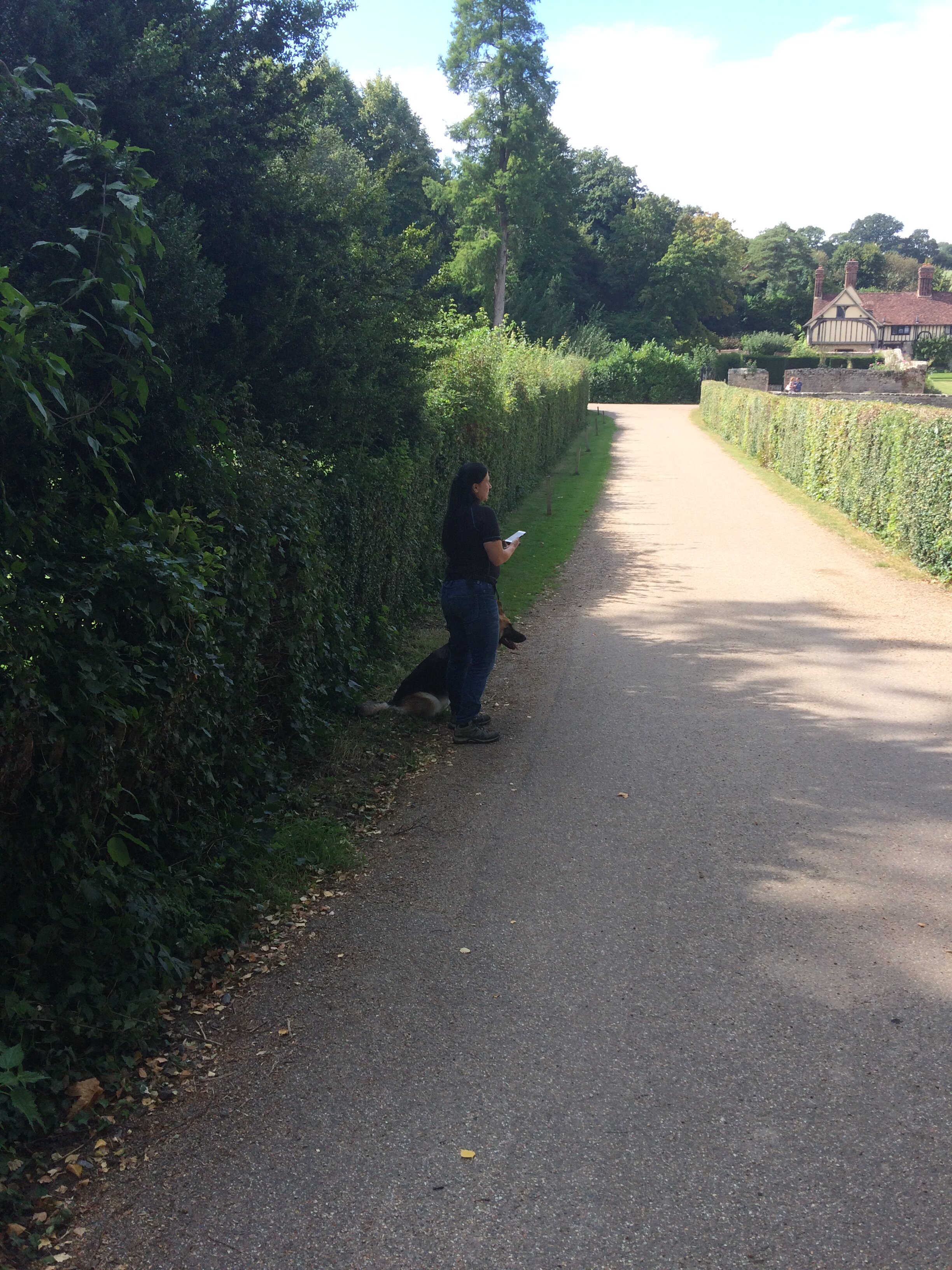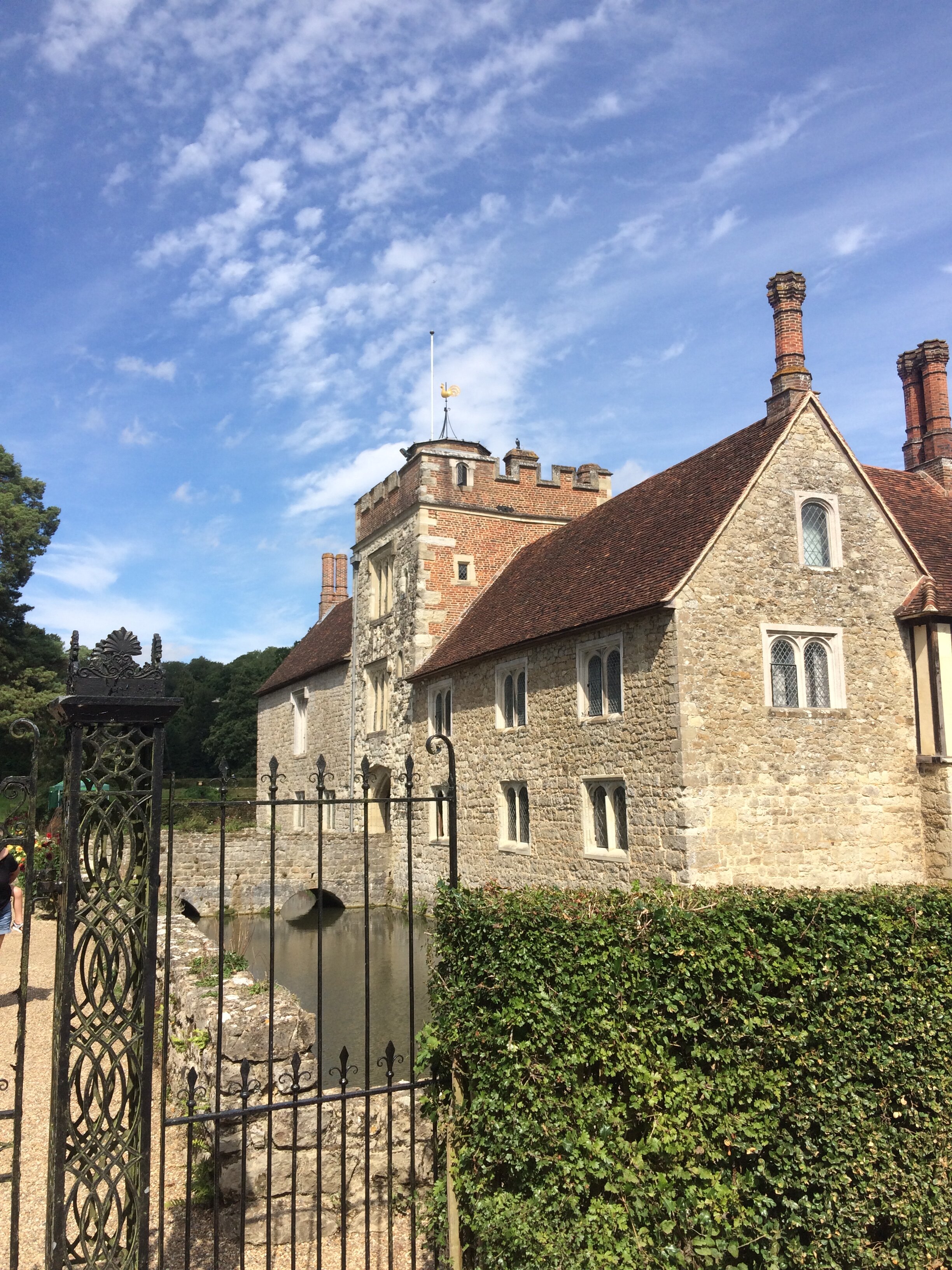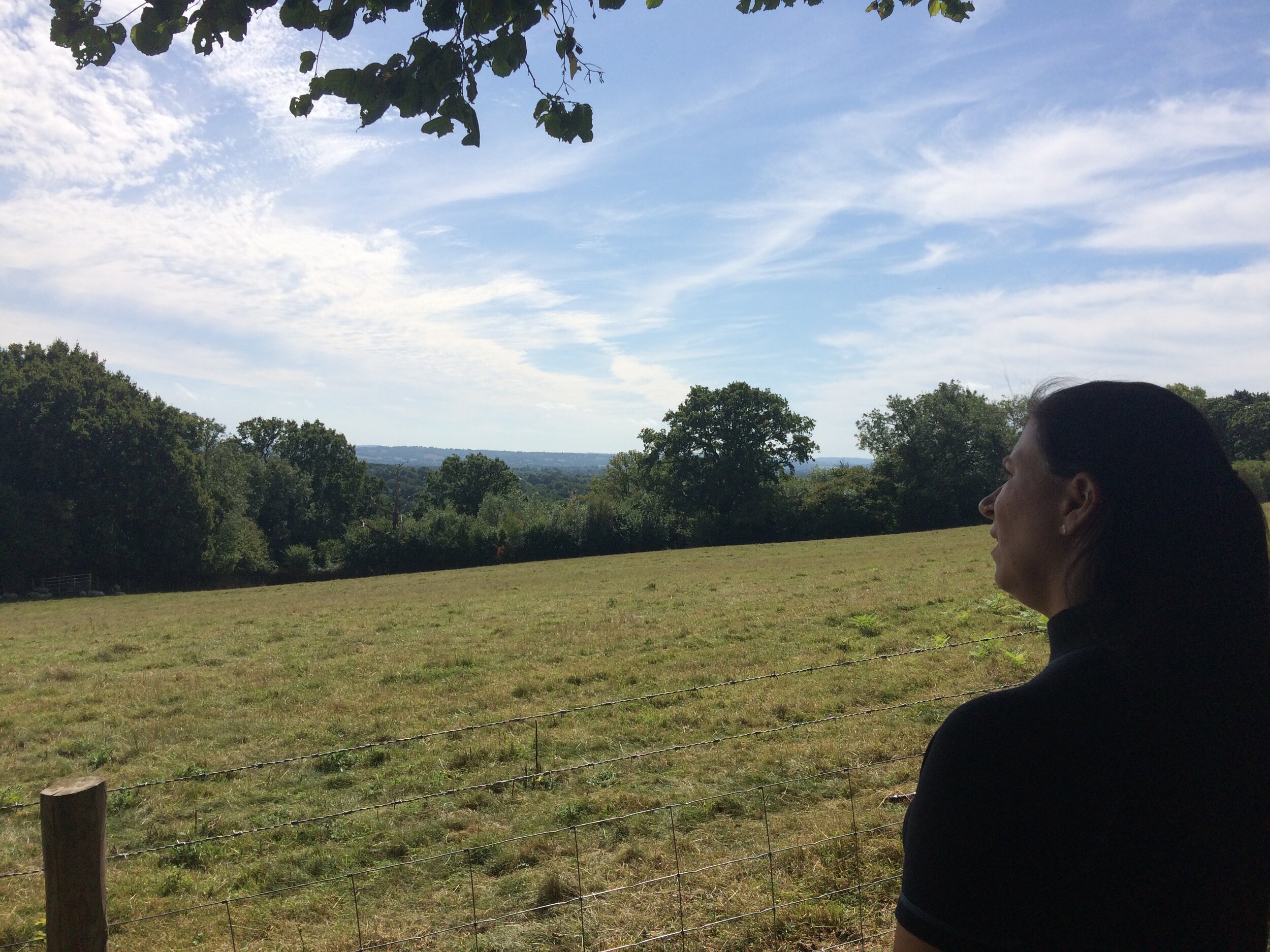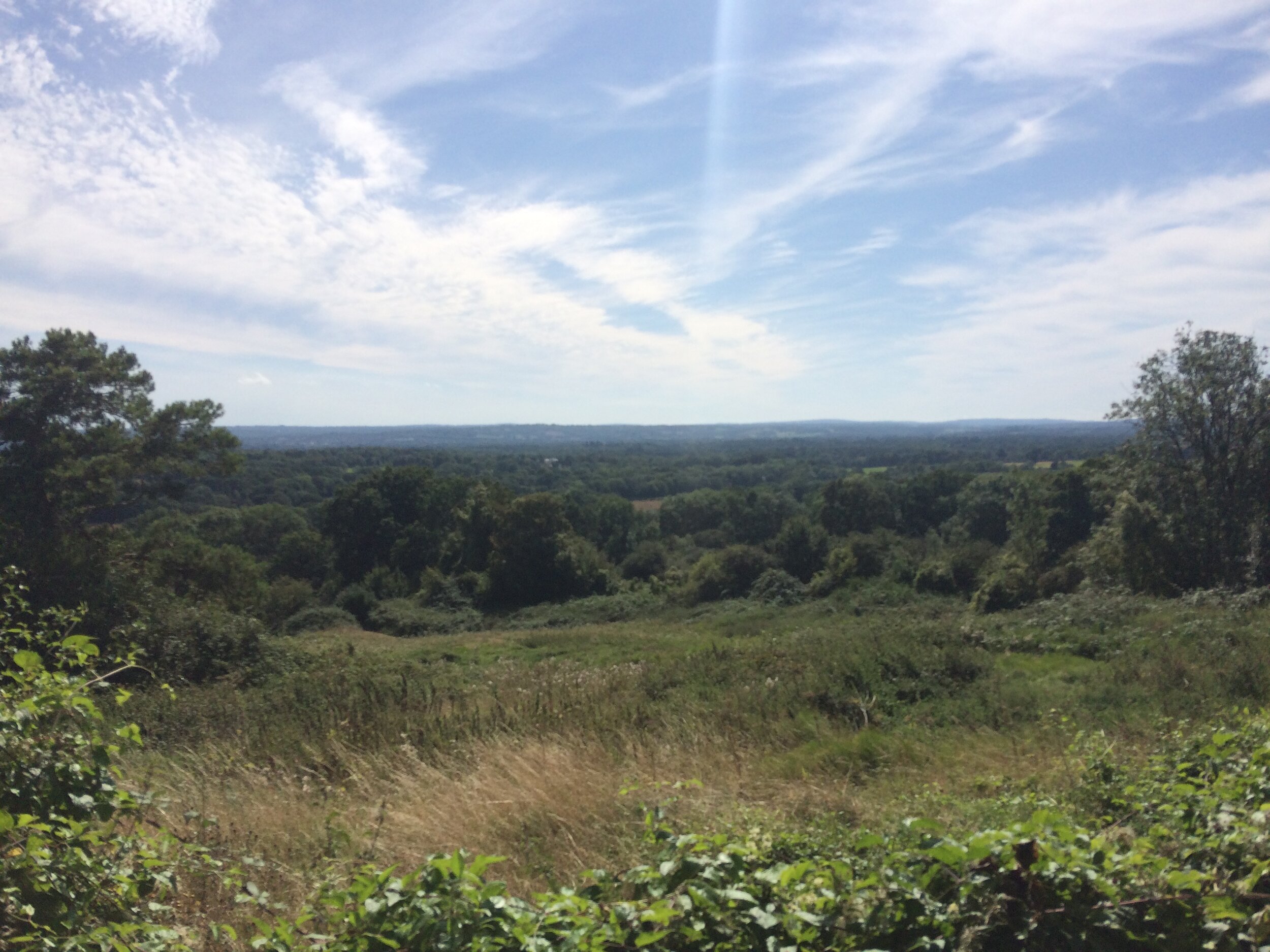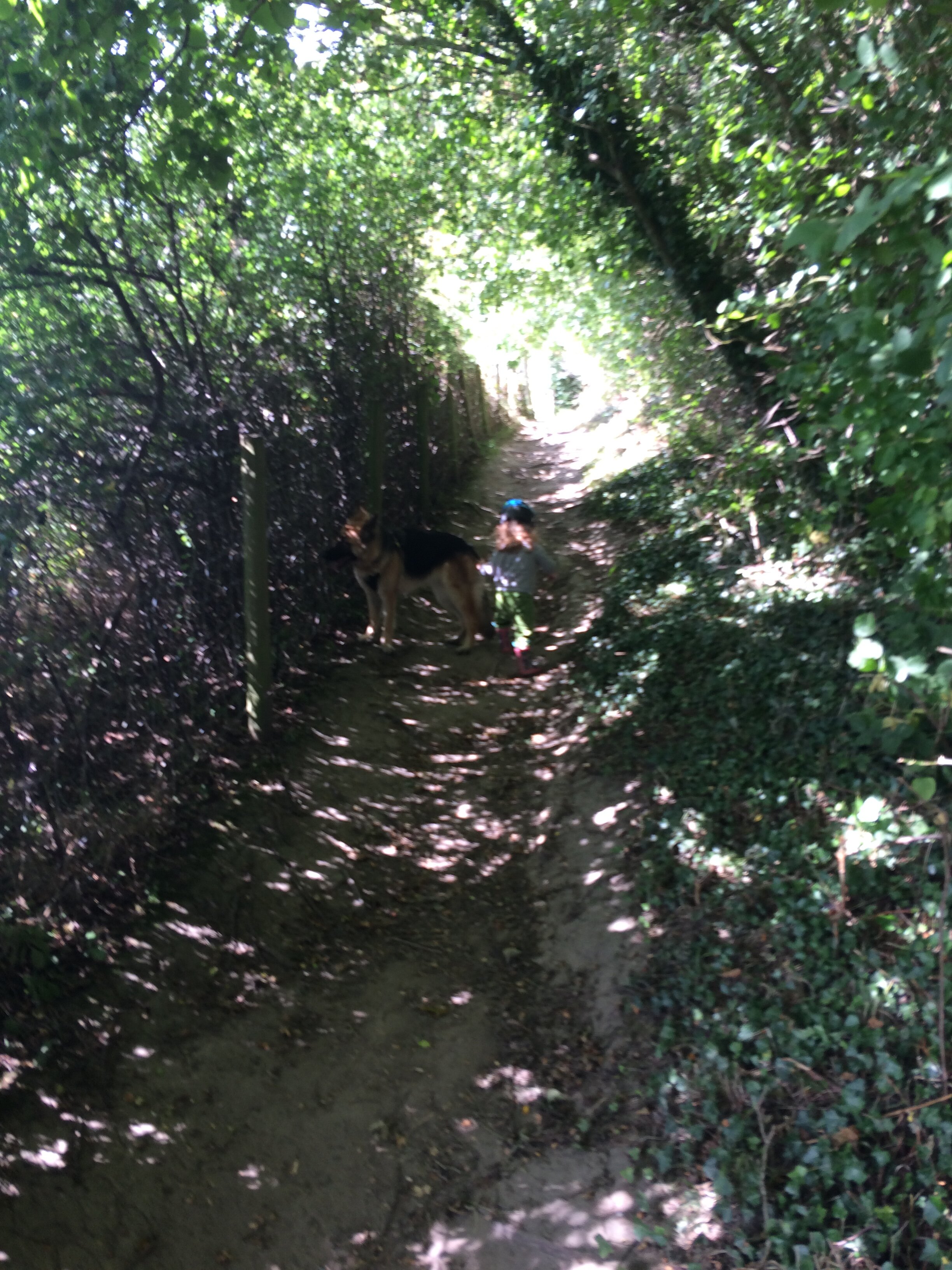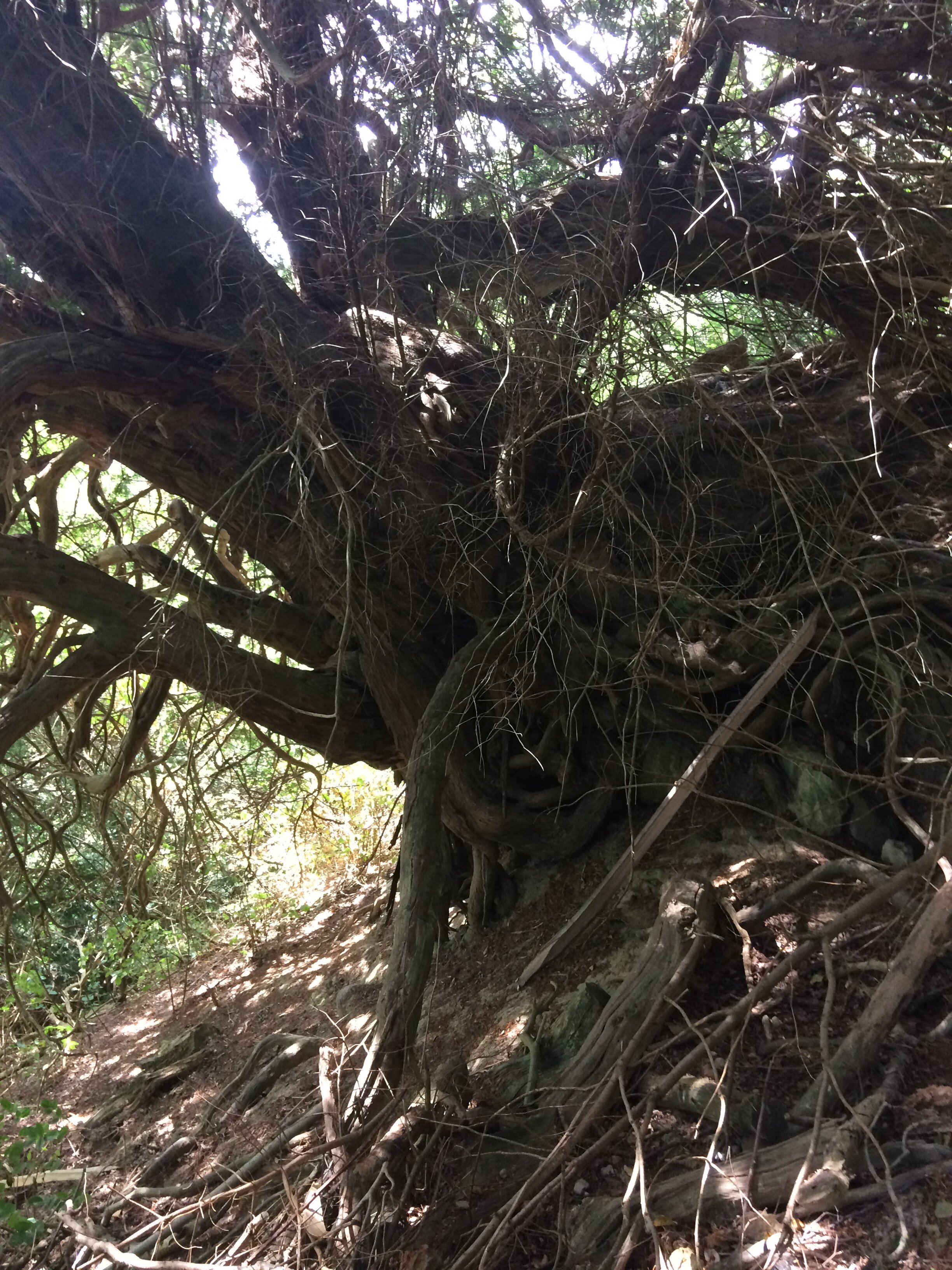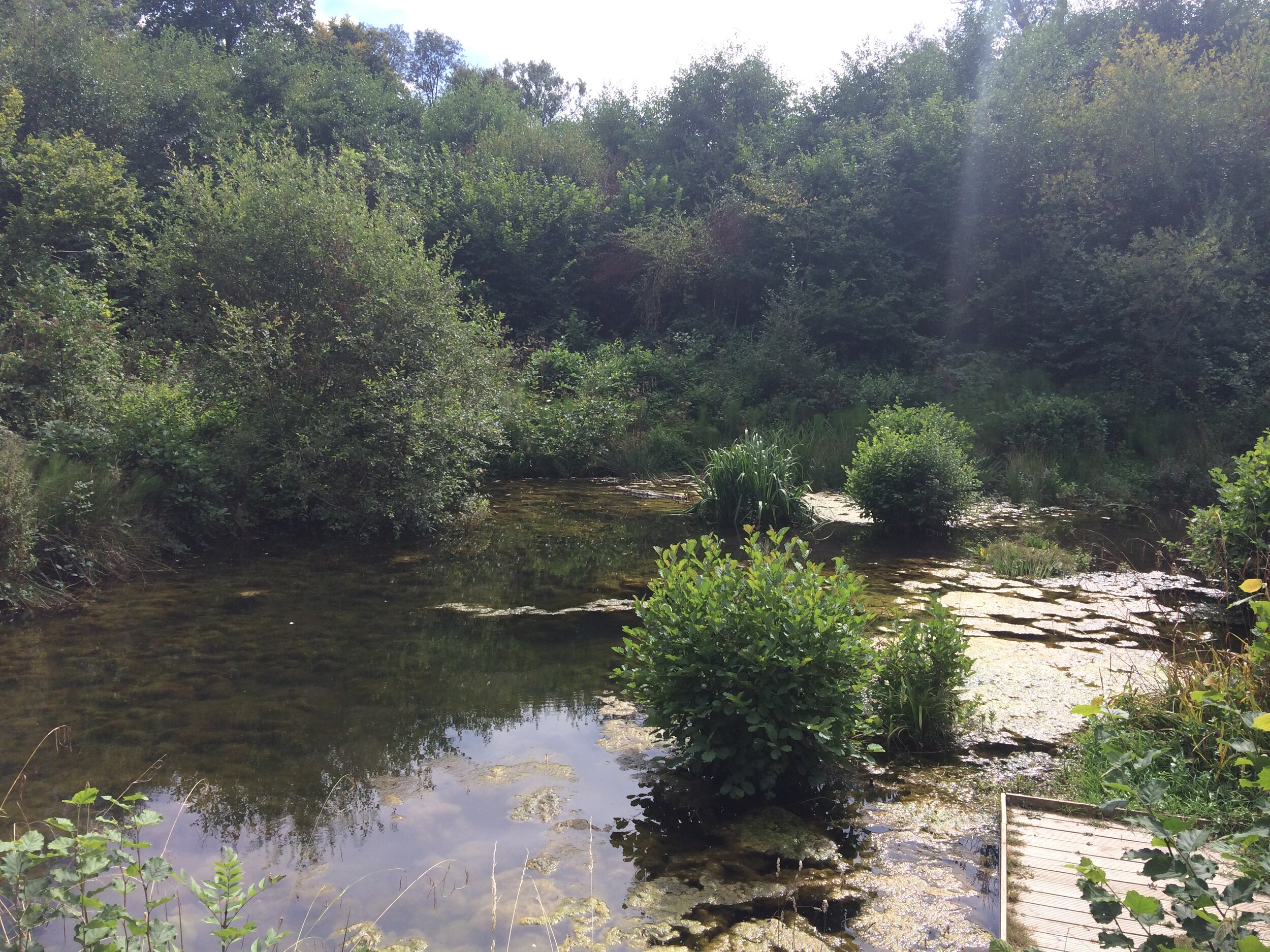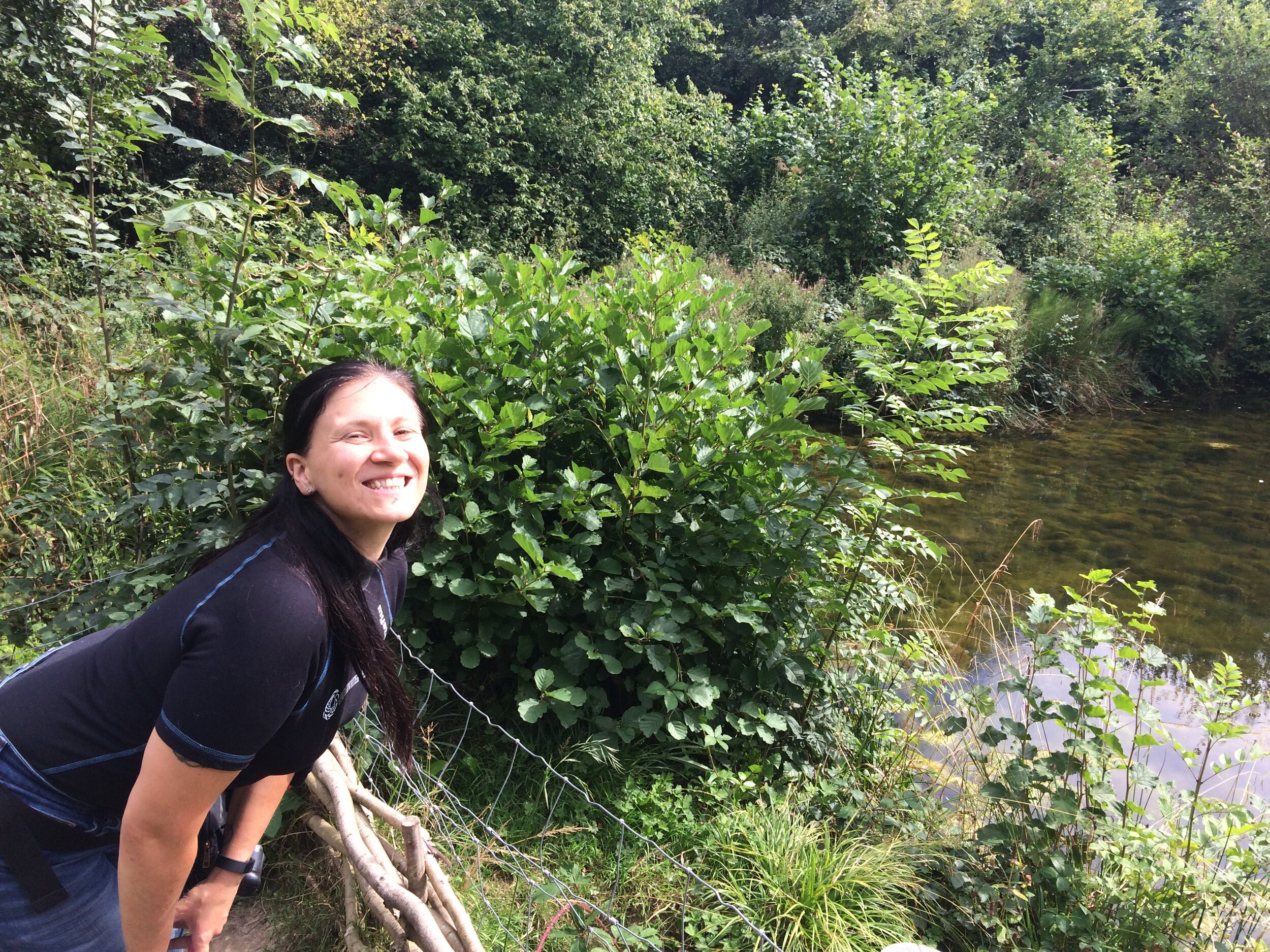Seeking solace in the summer sunshine, our little band of misfit adventurers desired open countryside and ancient homesteads for exploration. It was an opportunity to enjoy fresh air and exercise, not too far from home.
Flicking through the annals of local historic intrigue, we came across the delightfully picturesque Ightham Mote, a 14th century moated house in the Kentish countryside near Sevenoaks. Blessed with 546 acres of ancient landscape, patchworks of forest and luscious farmland, Ightham Mote is a gem, run by the National Trust and open to families throughout the year.
There is a charge for none members using the car park and a separate charge to enter the house and gardens, but most of the estates are free to wander and enjoy. We planned an adventure around the estates, as we knew Bramble was not permitted inside the house or gardens, and Audrey was very keen to take her new bike out for a spin.
The house is a beautiful romantic caricature of medieval splendour. Its wooden beams, impressive chimneys and grand turreted entrance are a tapestry of continuous additions throughout its ever evolving lifespan.
Ightham Motes earliest known owner was Thomas Cawne, a young rogue, daring soldier and cruel knight. Thomas settled at Ightham Mote with his wife and two children in around 1360. He had a history of illicit activities and suspicious dealings. His son Robert inherited the house, but Robert was later sent to the Tower of London for attempting to murder his wife.
Influential Kent family, the Haughts, owned the house in the later 14th century after marrying into the Cawne family inheritance. Their family were well connected knights, Sheriffs and even married into the monarchy. The house grew with inner and outer courtyards, reception rooms and guest accommodation added. It quickly became one of the country’s most desirable properties. In the early 16th century, Edward Haught amassed large debts and before he ended up in a debtor’s jail, he sold the house.
Courtier of Henry VII and VIII, Richard Clement purchased Ightham Mote in 1521 for £400. He added stained glass windows to the building and the remarkable painted ceiling in the guest chambers. Clement led a life of influence and illicit intrigue, having 2 wives, at least two mistresses and three illegitimate children. After his death, the estate fell to his wife, Lady Anne Grey.
The Selby’s, a family of law enforcement officers from Northumberland, controlling the borders between England and Scotland during the 16th and 17th centuries, would own Ightham Mote for nearly 300 years until the 19th century. In 1889 Sir Thomas Coyler-Ferguson bought the property and began conservation work, modernising and conducting vital repairs. He returned it to a country residence and even allowed paying visitors to the house, at 2 shillings per person.
After the sale of its contents and only narrowly being saved from destruction in the mid 20th century, it was purchased by Charles Henry Robinson, who spent three decades furnishing the property with appropriate medieval collections. After his death, he bequeathed Ightham Mote to the National Trust, so that it could be enjoyed by all the ages.
We skirted the impressive building, peering over carefully trimmed hedges at the immaculate structure beyond. The moat glistened sweetly in the glorious sunshine, gently disguising its fearsome protective function. Our path began to rise, spiriting us away from the stately centrepiece and into the green and dynamic surrounding countryside. It was a gradual climb on uneven gravel paths, not the easiest to navigate with a children’s bicycle, but we continued, higher and higher until our efforts were rewarded with stunning views of the Kent Downs Area of Outstanding Natural Beauty.
We walked for over an hour along the circular route, through forests, over hills, alongside streams and lagoons, taking in the wonders of nature as we went. Wildflowers sprung in all directions, bluebells, wood anemone, marsh marigold, campion, rosebay and willowherb burst into bloom amidst the oak, sweet chestnut and beech trees. It was a welcome escape from the crowded chaos of city life.
Exhausted and satisfied, we gladly made our way to the busy little cafe for refreshments. Tea and cake was thoroughly appreciated, there were vegan options aplenty and even treats for our daring puppy! Of course, in this heat, a cool refreshing beer was also a welcome sight!
Whilst some of the additional costs and restrictions make it essential to double check before visiting, the fascinating history and wondrous scenic pleasure of Ightham Mote is certainly worth the adventure.

